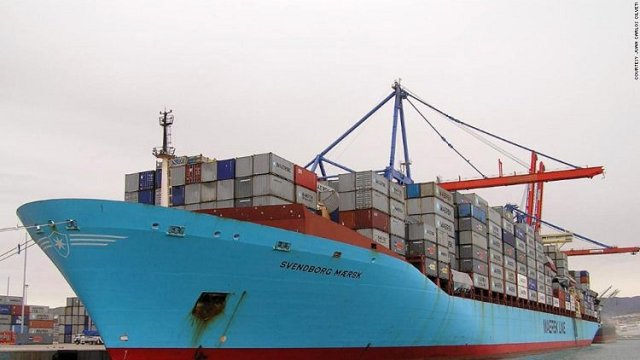- Stakeholders seek multi-sectoral devt of maritime potential
- Harp on successful elections and transition
Nigeria’s maritime sector is projected to spend about N939.5 billion ($2.588 billion) on vessels financing in the next four years, going by the new forecast released by the Nigerian Maritime Administration and Safety Agency (NIMASA).
This comes amid the under-exploitation of the sector’s potential, with stakeholders calling for urgent multi-sectoral intervention to aid financing and infrastructure development of the industry.
The Nigeria’s Maritime Industry Forecast 2019-2020, tagged: “Harnessing The Maritime And Shipping Sector For Sustainable Growth,” launched in Lagos, yesterday, predicts a brighter future for Nigeria’s maritime sector, with the industry volume expected to grow by 10 per this year, despite prevailing domestic and global conditions. However, growth in the industry is hinged on the successful conclusion of the forthcoming general elections, and assurance of security of the environment given that insecurity is a seen as the biggest disincentive to trade, and reinforces the need to protect Nigeria’s territorial waters.
The Director-General, NIMASA, Dakuku Peterside, at the official launch the document, said the maritime sector has the potential to contribute at least 10 per cent of Nigeria’s Gross Domestic Product (GDP) in no distant future.
He added that Nigeria has the biggest market in Africa; and generates about 65 to 76 % of cargo throughput in West Africa, while 65 per cent of all cargo heading for these regions will most likely end up in the Nigerian market.
Considering the fact that shipping is capital intensive, Peterside said the Cabotage Vessel Financing Fund (CVFF) is not adequate enough to address the huge demand for maritime assets, hence NIMASA is looking at other Ship Financing Models to encourage the local operators.
“We have been engaging with government at the highest level to push for special intervention fund, special interest rate of single digit, and other incentives that will drive optimal performance in the sector. We shall not relent in our drive to put the right framework together to help beneficiaries and investors have good return on investment,” he said.
The outlook showed that the top five vessels in projected demand between 2019 and 2023, would be tugboats, security patrol vessels, jargon barges, and crew boats, among others.Breaking down the expected expenses, it noted that industry’s expenditure on Category 1 vessels was would be $1.65 billion or 51 per cent of total spend compared to $1.04 billion or 33 per cent for Category 2 vessels, and $519 million or 16 per cent for Category 3 vessels, totaling $2.588 billion (about N939.5 billion).
However, Nigeria spent about N1.09 trillion on vessels in the last four years. Between 2014 and 2018, the industry spent $2.21billion on Category 1 of marine vessels representing 73 per cent of total spend. Category 2 was $393 million or 13 per cent, while $437 million or 14 per cent was invested in Category 3 vessels.
Minister of Transportation, Rotimi Amaechi, said the forecast would help industry operators in harnessing the potential, and guide their operations in line with the global trend and standards.
Amaechi, who was represented by Mrs Gloria Ayabe, said the sector is currently faced with all forms of criminality such as armed robbery, oil theft piracy and other forms of unreported crimes. He assured of government’s effort to stem the tide of such acts with the promotion of the Anti-piracy Bill, currently before the National Assembly among others measures.
Partner, Kainosedge Consulting, Dr. Doyin Salami, said all indications showed that the sector is progressing, but not in a manner that is expected, considering huge potential in the sector.Salami, who said issues around regulations have great affected the sector in the past, said the potential are grossly underexploited.
He noted that growth in the maritime industry despite current activities is still far below the recession era in 2016. He queried: “What is the potential for the entire sector, relative to where it is now?”














